
So, the agriculture in the high plains revolves around cattle farming, seems to me…usually black angus or these herefords—both mostly polled (a genetic mutation that renders them hornless).
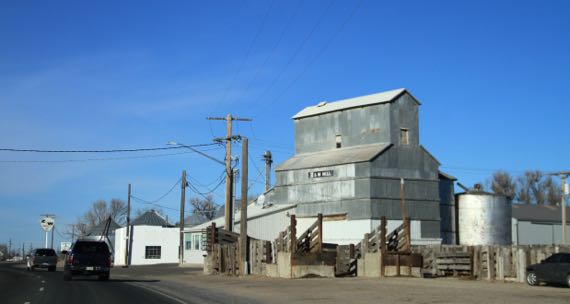
Along with the natural grazing, there’s plenty of hay growing and baling, and a demand for grain, mostly grown where there’s irrigation. Some irrigation is from creeks/rivers, but mostly the water seems to be pumped up from the aquifer below (essentially non-renewable). Here’s a cattle loading chute and an elevator (grain storage).
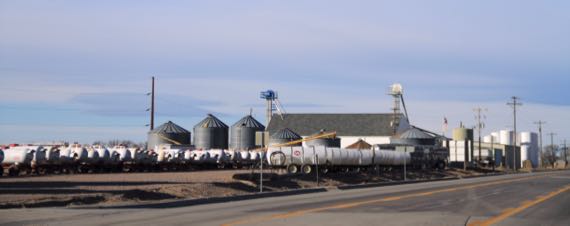
To make the plants grow, these tanks supply fertilizer or herbicides…I’m guessing mostly fertilizer. Go ammonium nitrate!

We continued to climb westward toward the Rockies, crossing the North Platte again and again before we diverged from it above Casper. Yes, ice—not thick, but it’s pretty cold and the sun, which seems strong in the car, is rather weak out in the wind.
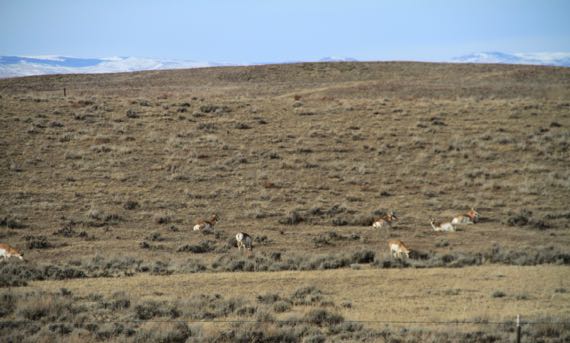
We’ve been looking for these four-foots, and finally found some, often gathered in fairly larger herds, some browsing and some resting. We also saw what we are pretty sure were mule deer; these were loners or up to a trio—not the large groups that the antelope have formed.

I read about a canyon in a Craig Johnson/Longmire book, and we checked it out…just an up-and-back side trip. The railroad was on the other side, and we saw a few fisherman. A sign indicated we should watch out for mountain sheep, but we saw zero. Here’s a side canyon opposite us.
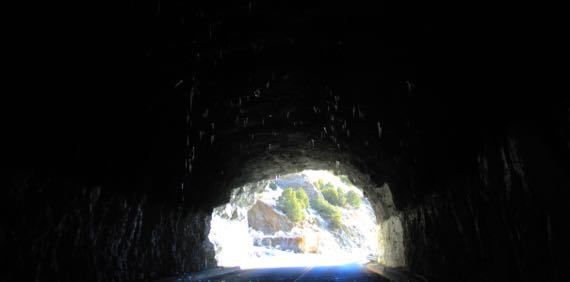
It was cold enough that the tunnels had interior icicles (that word is difficult to spell if you don’t do it very often). The train’s tunnels were only as large as they needed to be. I suppose that’s true for the highway (engineers are parsimonious in design, no?), but they didn’t seem so rigidly rectangular as the railroad ones.
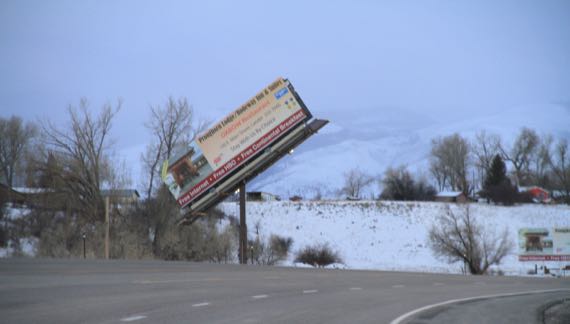
Now, we’re up against the Winds, and it is windy, and as we approached town we could see that it was snowing in the higher altitudes…that’s snow making that grey-blue obscurity above the sign. (Is that our motel?) We hear we may get a bit of S tonight, but not much accumulation. We bought new -30°F windshield wiper fluid and topped off our reservoir, so hopefully it’ll tolerate the low temps—ATL fluid is limited to +32°F (save the environment!).
I noticed these photos tend to be very horizontal—that’s the way it is out on the plains. Now that we’re approaching the mountains, the vertical has rejoined us.